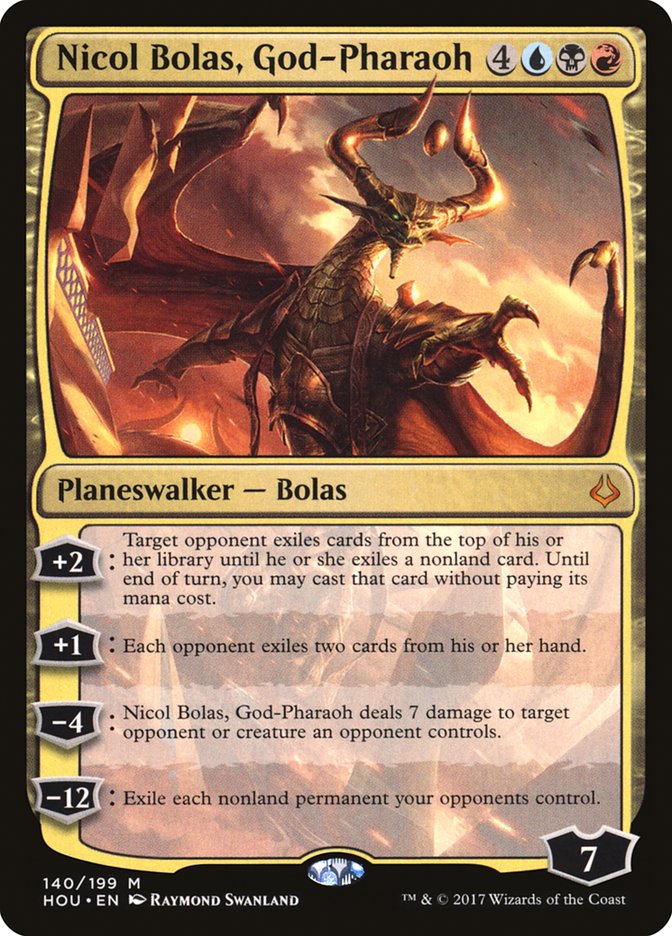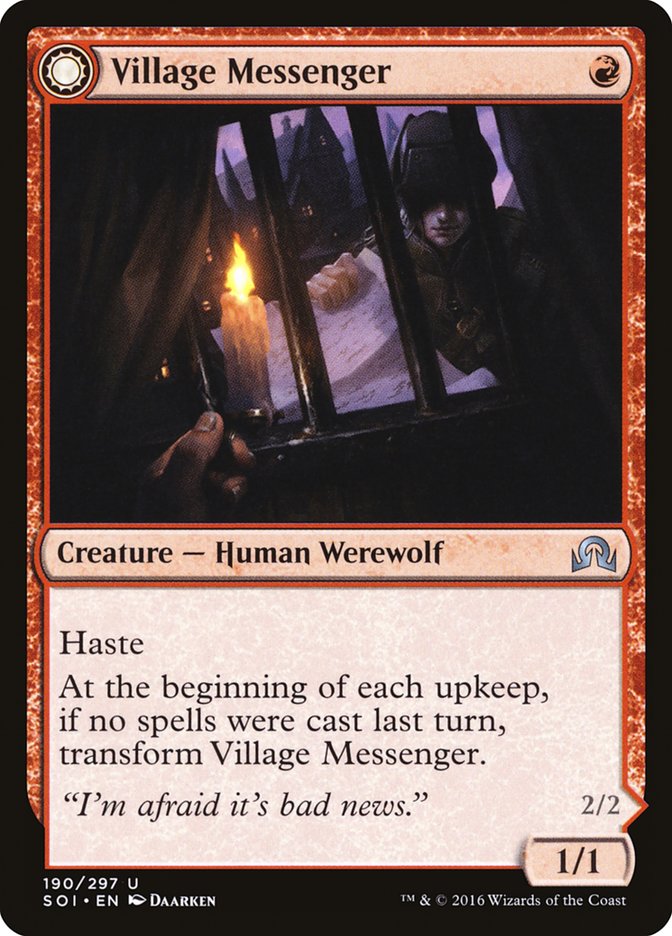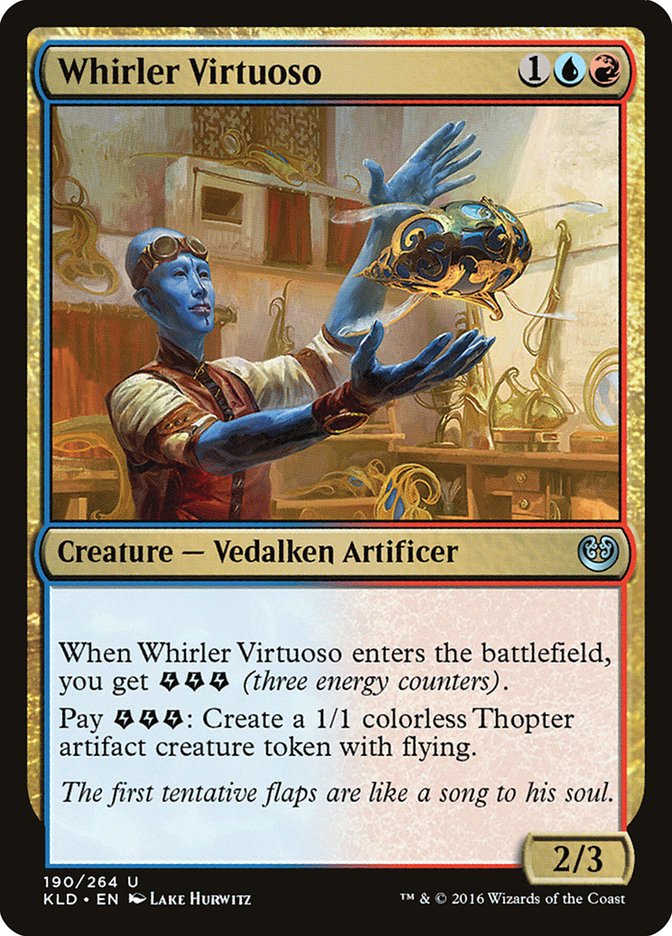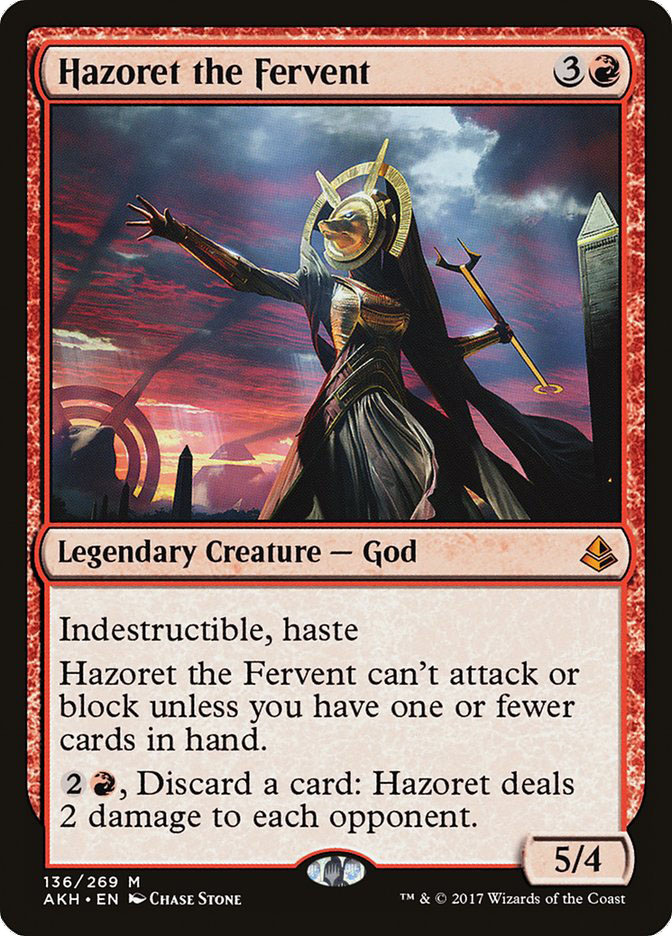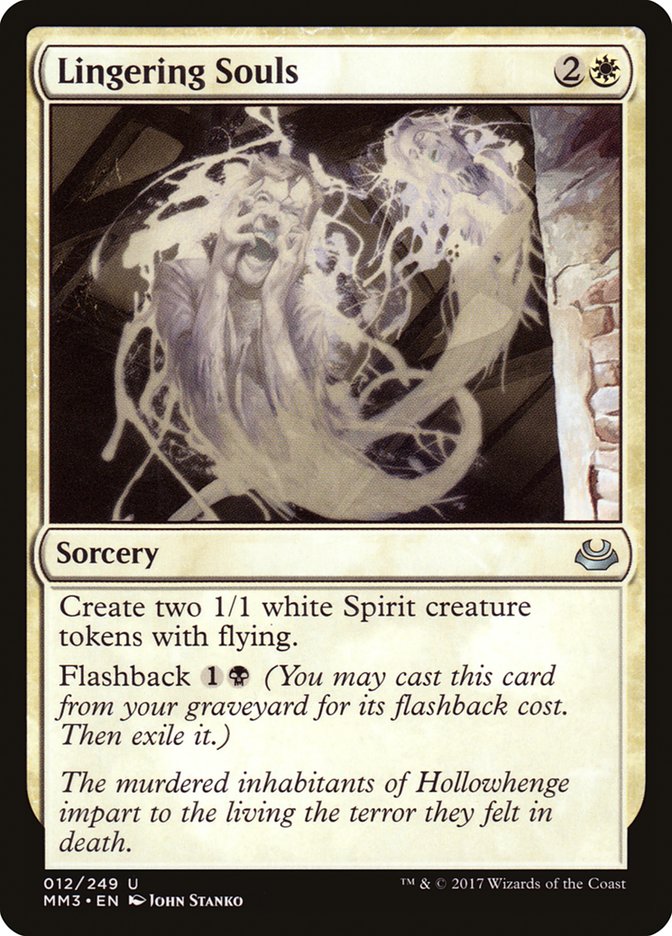Pro Tour Hour of Devastation has come and gone, leaving behind a format that isn’t for the faint of heart. Effectively six mono-red decks dominating the Top 8, making control appear to be at its historical weakest. I wrote last time about U/R Control splashing Nicol Bolas, God-Pharaoh and I was confident that the deck had high consistency as well as power. I ran it through gauntlets, went 4-0-drop in two Leagues, and confidently purchased the required cards for Pro Tour Hour of Devastation. I tested with the squad and impressed fellow Lingering Soul, Travis Woo. He was immediately onboard with the deck, watching me devastate each aggressive and midrange opponent with ease. The weekend before the Pro Tour in Kyoto featured a limited Grand Prix, which allowed me to keep the lid on my powerful control deck for the time being. After opening one of the weakest Sealed pools in recent history, I decided to hell with secrecy, and prepared to battle in the PTQ that Sunday.
The PTQ was an eight-round competition, filled with some powerful, Silver-level professionals. My expectations did drop prior to the event because we started testing against the new Ramunap Red phenomenon. Grixis Control, or any control for that matter, was at an extreme disadvantage against red decks. My hope was that the fad hadn’t caught on yet, so I entered the arena with maindeck Nicol Bolas, God-Pharaoh, hoping to skillfully dodge the red scare. I defeated nearly every archetype in Standard, falling once to Ramunap Red in the Swiss. My record of 7-1 was enough to propel me to the Top 8, but pure luck enabled me to make the elimination rounds, as, in Round 6, I battled against my second red-playing opponent of the day.
The first time didn’t go well at all, but this opponent was playing a few Eldrazi creatures, making the matchup significantly better. When these burn decks tap all their mana for four- and five-drop creatures that aren’t indestructible, control has a fighting chance. This match was intense, with Game 3 coming down to a Disallow on Ramanap Ruins, followed by a Torrential Gearhulk on the next activation to seal the game. I won that game at one life, against a crude version, and I still needed to muster every ounce of luck to do so.
The Top 8 of the PTQ began and my opponent started with a turn 1 Village Messenger. I was on the play with Essence Scatter and no removal, so I easily lost to the influx of creatures and burn that followed. Game 2, I had the best possible opening hand. I deployed a Magma Spray on turn 1, an Abrade on turn 2, a Supreme Will counterspell on turn 3, a Glimmer of Genius on turn 4, and a couple of Torrential Gearhulks to flex control’s card advantage muscle in the face of my opponent.
I easily lost this game.
His hand was reduced to a couple of lands, but my life total was at six after a few bouts with a pesky Phoenix that haunted me from the graveyard. After exiling the annoying thing, I found myself dead to three land tosses and my PTQ victory with it. At this point, I realized that Ramunap Red was a different animal and much more resilient than Mono-Red has ever been. It can win with no resources, or flooded. The creatures prevent blocking, making Ramunap Red strong against decks that would historically have had an advantage.
I informed my team that control had no shot to defeat this new plague on Standard, which broke my heart. I had found a control deck that can compete with any archetype, except for the most-played one in that upcoming Pro Tour. My teammates and I hit the database, looking for cards that gained life in Grixis. Understandably, black was the color with the most options, but each spell had a double color requirement. This left artifacts as the only go-to for control’s survival. We tried Woodweaver’s Puzzleknot, Luxa River Shrine, and Filigree Familiar, but to no avail. These spells didn’t gain life at a fast-enough rate, nor did they put pressure on the opponent. We finally came across a hidden bomb from Sealed tournaments, Multiform Wonder.
Multiform Wonder provides a lifelink threat against aggressive decks at a reasonable cost. The biggest concern we had in testing was if the Ramunap Red players would sideboard in additional Abrades for Torrential Gearhulk. If opponents decided to bring in more Abrades, then this sideboard plan would be inherently flawed.
Even after testing against a full set of hate from the red decks, Multiform Wonder was still the best shot control had. This evened the matchup to a coin toss, 50/50, but only in Games 2 and 3. Game 1 was almost a guaranteed loss unless I butchered the deck in a way that would ruin the other matchups. Being down one game and even post-sideboard is a terrible gameplan for a Pro Tour against the best deck. For this reason, I tabled this powerful control deck and betrayed everything I’ve ever stood for.
Creatures (4)
Planeswalkers (1)
Lands (14)
Spells (41)

This is nearly identical to the 75 I ran in the PTQ. The only changes are the additions of Multiform Wonder, a couple Whirler Virtuoso, and a few numbers tweaks in the sideboard. The maindeck is the same and I wouldn’t change it at this point. I understand that Nicol Bolas, God-Pharaoh is embarrassing against Ramunap Red, but cutting it hurts the mirror, midrange, and combo decks. Game 1 is as close to a giveaway as possible, so focus your strengths on defeating red decks after sideboarding.
My team and I thought of Whirler Virtuoso as a sideboard option against aggressive decks. It is the best blocker that U/R-style decks can muster, leading us to these desperate measures. Whirler Virtuoso, four Magma Spray, and a set of Multiform Wonders combined give Grixis Control the tools required to even the score.
Although Ramunap Red has endangered the well-being of control in Standard, it takes only slight metagame shift to resuscitate the archetype. Zombies is on the rise as a deck that can tango with Bomat Courier and friends, which is a fantastic matchup for all builds of control. If a few more of these midrange decks surge forward and take the throne away from Ramunap Red, control will be in position to pounce. That is what good Standard is all about: metagames that continuously shift, where one deck becomes dominant and then others exploit weaknesses and climb to the top. Ramunap Red isn’t unbeatable, but it is kryptonite to all forms of control. Being able to win by drawing lands that deal damage is a dimension that control decks cannot regularly defeat.
My Treason
“I have never walked around a tournament with this much time between rounds. I guess I will go get a beverage.” @shaheenmtg pic.twitter.com/GkZ2ECZVZH
— Brian David-Marshall (@Top8Games) July 29, 2017
This is just wrong! WRONG I TELL YOU!!! pic.twitter.com/bXKp8ZbuId
— Brian David-Marshall (@Top8Games) July 29, 2017
With the sting of that Top 8 defeat and the futile attempt to make Grixis work, I turned to the enemy. Team #LingeringSouls and I took the most powerful deck, once again, and attempted to make the best version. The team and I determined that four Hazoret the Fervent was the correct number early in testing. Hazoret is the key to the Ramunap Red mirror, which means having less than four copies was a bit ambitious. The mirror boiled down to which player can get a God attacking first, so adding the fourth copy was a no-brainer. The biggest mistake we made after that revelation is not adding an additional land. Having four copies of Chandra, Torch of Defiance in the sideboard, four copies of Hazoret in the main, and only twenty-three lands was a bit foolish.
We learned this in the tournament as many of us fell to not hitting the fourth land on time for a crucial God or planeswalker. The team had an overall positive record with Ramunap Red at Pro Tour Hour of Devastation. Donald Smith started hot at 7-1 and all the rest of the Souls made Day 2. I started off Constructed at 3-0 on Day 2, once I figured out how to aggro appropriately. The event was very enjoyable, as BDM posted a few images of my new guilty pleasure.
I will not lie, my friends: finishing rounds with 30 minutes or more on the clock was a new phenomenon for me (outside of Limited). I will say I hated the gameplay of the mirror match, which resulted in three of my five Constructed losses. I felt that the games outside of the mirror had a decent amount of play to them, but nothing compared to the satisfying icy grip that control provides. I wanted my last event with the team to be unified, piloting the deck of my enemies, and I have no regrets. I did reaffirm my dislike of the archetype in competitive play and I will probably never cast a Raging Goblin-style card again, but I did gain additional perspective on aggro that I didn’t have prior.
Aggro decks aren’t the only aspects disappearing from my competitive game. Team #LingeringSouls is officially no longer together after Pro Tour Hour of Devastation. The team I crafted from a ragtag group of Twitter leftovers achieved incredible things. Donald Smith Jr. is a Platinum pro with a Pro Tour Top 8, Chris Fennell is a Gold pro with another Pro Tour Top 8, Travis Woo is a Gold pro, and both Andreas Ganz and I achieved Silver once again.
When this group was crafted, we only had a couple of Silver-level pros amongst us. Stepping back and observing the gains is awe-inspiring, which helped create this wonderful narrative from the Pro Tour Team Series. Brian David-Marshall came to one of our testing houses, interviewed us, and watched us dominate the leaderboard and enter the top four teams after Pro Tour Amonkhet. The teams around us were cluttered with Hall of Famers, squads fully comprised of Platinum pros, and dominated by the best players in the world. We were truly the underdogs that achieved great things together and I am going to miss my squad, my family, my friends.
With every end, there is a new beginning. I am proud to announce that I will be a member of #TeamCardhoarder, effective immediately. I was approached with the offer as the professional season ended and I accepted with high expectations. The members of #TeamCardhoarder are talented professionals that I have known for a very long time. Noah Walker, Devin Koepke, and Joe Lossett are all close friends of mine that I have known for years. I am also joining Jack Kiefer and Bobby Graves, who are both powerful up-and-comers in the game that I am very excited to work with.
This group of players reminds me of my previous team in many ways. They are young, talented, and hungry, which creates a recipe for success. I come in as the veteran, older mage once again, bringing some wisdom from years of playing on the SCG and Pro Tours. I expect #TeamCardhoarder to rise to the challenge, just as Team #LingeringSouls did before. Old man experience, combined with youthful vigor, is a dangerous duo!


